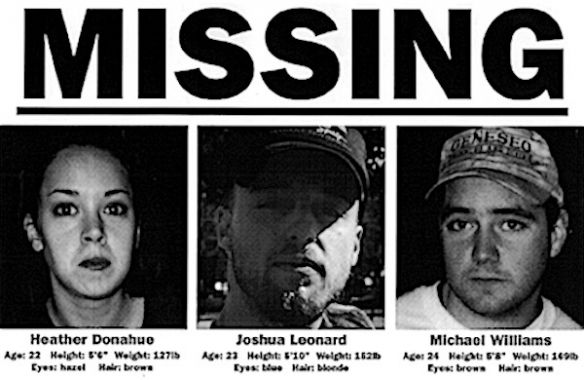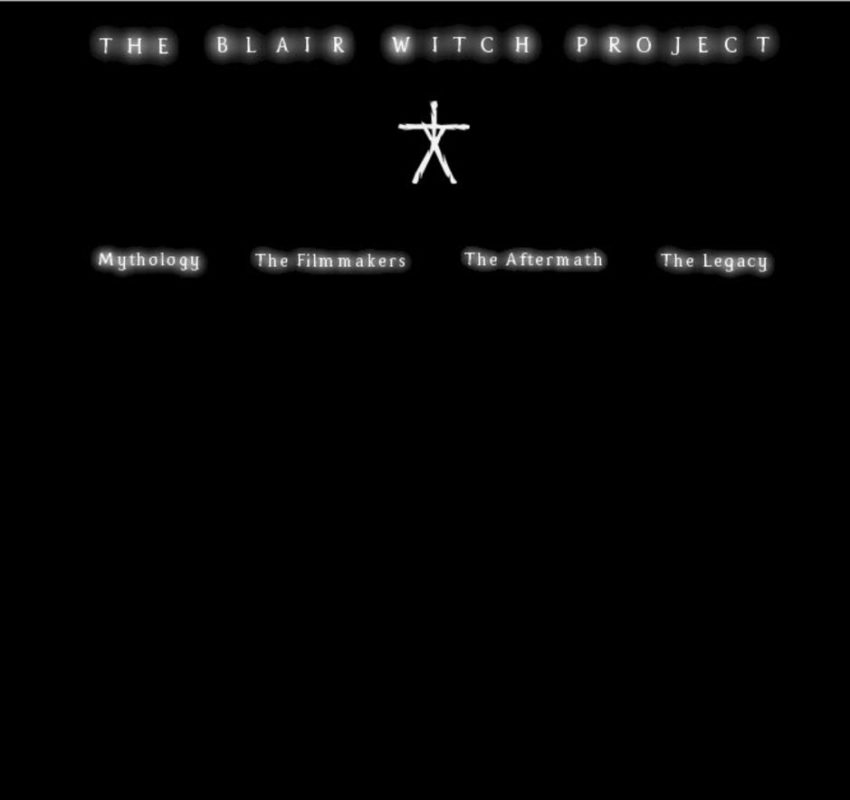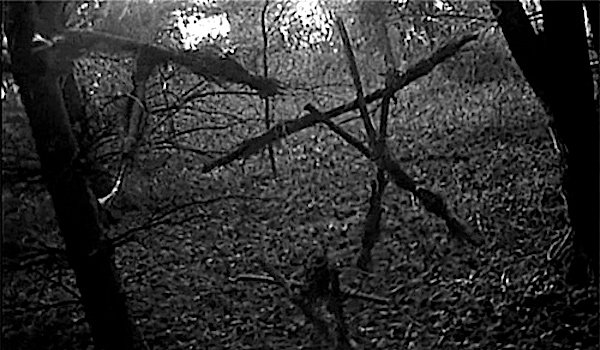It’s the 20th anniversary of the release of horror phenomenon The Blair Witch Project, one of the most influential and genre-defining films of our time. But how did such a low-budget film become a horror classic? The truth lies in how the film was made.

The teaser trailer for 1999’s The Blair Witch Project begins,
“In October of 1994, three student filmmakers disappeared in the woods near Burkittsville, Maryland while shooting a documentary.
A year later their footage was found.”
In the twenty years since its release, interest in the mother of all found-footage horror films has not waned, despite a shift in the folklore surrounding it.
A Masterlass in Viral Marketing
The Blair Witch Project is undoubtably one of the most iconic and divisive horror films ever released. This success is due, in part, to the filmmakers’ utilisation of the newfound accessibility of the internet, unleashing one of the world’s first ever viral marketing campaigns.
Famously, they created a spooky website for the film (which still exists today). In addition, they even screened an hour-long fictitious television special titled Cure of the Blair Witch, which alluded to an upcoming feature-length film on the subject. All of this was used as a promotional tool to add legitimacy and terrify would-be audiences before the film even premiered. This viral marketing campaign lasted for months.

The hype built through word of mouth and on internet message boards reached a fever-pitch by the time the film hit theatres.
Genuine Horror
The film was made with a budget of only $60,000 and hosted a unique filmmaking experience for its actors, to say the least. Heather Donahue, Joshua Leonard, and Michael C. Williams were given a detailed outline of the script. However, their dialogue was almost completely improvised. Yet still, this was not the most challenging aspect of the shoot.
In a film titled, The Blair Witch Project, audiences never got to see an actual witch. The truly terrifying moments in the film arise due to the off-the-cuff acting skills of the performers, as well as their honest reactions to what was happening around them.
The three actors shot the film themselves, learning how to use the camera equipment during pre-production. They were encouraged to improvise and left to encounter the unknown horrors the filmmakers had in store for them. Film cannisters in the woods drove the scenes, creepy children’s voices played outside their tents. The Filmmakers stomped around at night, breaking sticks and throwing rocks. Every aspect of the shoot was designed to elicit real responses from the cast.
The result is a study in genuine terror and authentic dread. Donahue’s monologues to camera are a highlight, imploring the audience to follow her into abject fear.

A New Subgenre
For audiences today, found-footage horror is par for the course, with genre staples like Paranormal Activity and Cloverfield raking it in at the box office. As well as the 2016 sequel, simply titled Blair Witch.
Such is the legacy of The Blair Witch Project; a viral campaign and film executed so effectively that fans believed for years that it was a true story.
Production designer Ben Rock told Esquire,
“One thing the movie benefited from greatly was the emerging internet and the ability to create a world that people could believe.
“They didn’t need to be asked to suspend disbelief, they just believed what they saw.”
It’s safe to say that this film could not be made today. In the twenty years since its release, audiences have grown too wise to the tricks of the marketing trade and fans can now recognise the ingenuity of the film’s release. However, conspiracy theories still surround the film to this day. It seems that the Blair Witch will continue to terrify viewers for decades to come.
Subscribe to FIB’s newsletter for your weekly dose of music, fashion and pop culture news!







